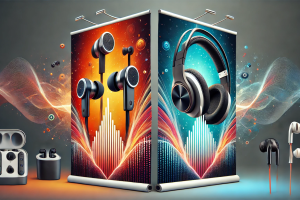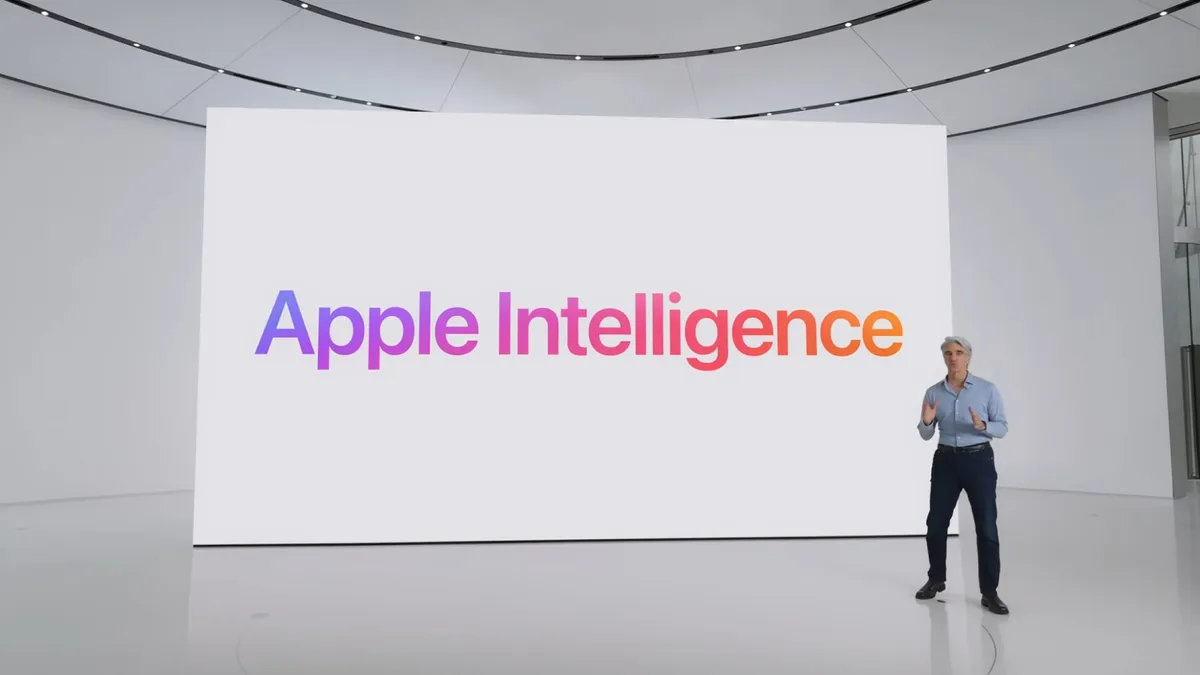Apple’s AI Innovations: Technology, Applications, and Future Developments
- Posted by Mathew (USA)
- Categories General, Technology
- Date August 21, 2024
The Evolution of Apple AI Technology
Apple’s journey in artificial intelligence began years ago, and today, the company stands at the forefront of AI technology. The integration of AI into Apple’s products is not just about enhancing functionality but also about creating seamless, intuitive user experiences that set Apple apart from its competitors.
Apple AI Technology: The Driving Force Behind Innovation
Apple AI technology has evolved significantly over the years, becoming a core component of the company’s strategy. With each new product release, Apple incorporates advanced AI technology designed to make its devices smarter and more capable. The Apple neural engine, for instance, is a prime example of how AI is being used to enhance the performance of Apple devices.
- Neural Engine: Introduced with the A11 Bionic chip, the neural engine is designed to accelerate machine learning tasks. It’s capable of performing billions of operations per second, making it a critical component in tasks like facial recognition and augmented reality (AR).
- Machine Learning: Machine learning is at the heart of Apple’s AI strategy. By enabling devices to learn from user behavior, Apple can deliver personalized experiences that improve over time. For example, the Photos app uses machine learning to organize and tag images, making it easier for users to find specific memories.
Apple Artificial Intelligence: Setting Industry Standards
Apple artificial intelligence is not just about creating smarter devices; it’s about setting industry standards. The company’s focus on privacy, for example, has led to the development of on-device AI, where data is processed locally rather than in the cloud. This approach ensures that user data remains private and secure while still benefiting from the power of AI.
- Siri: One of the most recognizable examples of Apple’s AI is Siri, the company’s virtual assistant. Siri uses advanced AI algorithms to understand and respond to user queries, providing a personalized experience that improves with use.
- AI Advancements: Apple’s AI advancements have also extended to accessibility. Features like VoiceOver and Voice Control rely on AI to make Apple devices more accessible to users with disabilities, showcasing the company’s commitment to inclusivity.
Apple AI Applications and Tools
Apple’s AI applications and tools are designed to enhance the user experience across all of its devices. Whether it’s through machine learning, the neural engine, or the integration of AI into Siri, Apple’s AI applications are some of the most sophisticated in the industry.
Apple Machine Learning: Personalization at Its Best
Apple machine learning is at the core of many of the company’s most innovative features. By analyzing user behavior and adapting to individual preferences, Apple can deliver a more personalized experience across its devices.
- Photos App: The Photos app is a great example of Apple machine learning in action. The app uses machine learning algorithms to recognize faces, objects, and scenes, making it easier for users to organize and search their photos. The app also generates personalized photo collections and memories, showcasing the power of machine learning in creating a more engaging user experience.
- Siri Suggestions: Siri uses machine learning to offer personalized suggestions based on your habits and preferences. Whether it’s recommending apps you use frequently or suggesting shortcuts to save you time, Siri’s machine learning capabilities make your device smarter and more intuitive.
Apple’s Siri AI: A Smart Assistant That Learns
Apple’s Siri AI is one of the most widely recognized AI applications in the world. Launched in 2011, Siri has continuously evolved, becoming smarter and more capable with each update. Today, Siri is more than just a voice assistant; it’s a smart AI that learns from your behavior to provide personalized assistance.
- Natural Language Processing: Siri uses natural language processing (NLP) to understand and respond to user queries. This technology allows Siri to interpret spoken language more accurately, providing more relevant and helpful responses.
- Integration Across Devices: Siri is integrated across all Apple devices, from iPhones and iPads to Macs and Apple Watches. This integration allows Siri to provide a consistent experience, no matter which device you’re using.
Apple Neural Engine: Powering the Future of AI
The Apple neural engine is a critical component of the company’s AI strategy. First introduced in 2017 with the A11 Bionic chip, the neural engine is designed to accelerate machine learning tasks, making Apple devices faster and more efficient.
- Performance: The neural engine can perform billions of operations per second, making it ideal for tasks that require significant computational power, such as facial recognition and AR.
- Efficiency: Despite its power, the neural engine is incredibly efficient, ensuring that even the most demanding AI tasks can be performed without draining the device’s battery.
Apple AI Research and Hardware
Apple’s AI research is a driving force behind the company’s innovations. Through its research initiatives, Apple is exploring new ways to integrate AI into its products, pushing the boundaries of what’s possible with technology.
Apple AI Research: Pioneering the Future
Apple AI research is focused on developing new AI technologies that can be integrated into the company’s products. From improving machine learning algorithms to developing new AI chips, Apple’s research is paving the way for the future of technology.
- Privacy: A key focus of Apple’s AI research is privacy. Apple is committed to ensuring that its AI technologies respect user privacy, which is why many of its AI features, such as Siri and the Photos app, process data on-device rather than in the cloud.
- Collaboration: Apple is also known for its collaboration with academic institutions and research organizations. By working with leading experts in the field, Apple can stay at the cutting edge of AI research and development.
Apple AI Chip: Revolutionizing Hardware
The development of the Apple AI chip is one of the most significant advancements in the company’s hardware strategy. The AI chip, also known as the neural engine, is designed to accelerate machine learning tasks, making Apple devices faster and more efficient.
- A-Series Chips: Apple’s A-series chips, which power the iPhone and iPad, all feature a neural engine. This AI chip is responsible for tasks such as facial recognition, AR, and image processing, ensuring that Apple devices can perform these tasks quickly and efficiently.
- M1 Chip: The introduction of the M1 chip in 2020 marked a significant milestone for Apple. The M1 chip, which powers the latest MacBooks and iPads, features a powerful neural engine that enhances AI performance across all applications. With the M1 chip, Apple has set a new standard for AI performance in consumer devices.
The Future of Apple AI: What’s Next?
As we look to the future, it’s clear that Apple will continue to play a leading role in the development of AI technology. From improving existing AI applications to developing new AI-driven features, Apple’s AI future is bright.
Apple AI Advancements: What to Expect
Apple’s AI advancements are likely to focus on several key areas in the coming years:
- Augmented Reality: AR is a significant area of focus for Apple, and AI will play a crucial role in its development. From improving object recognition to creating more immersive AR experiences, AI will be at the heart of Apple’s AR strategy.
- Health and Wellness: Apple has already made significant strides in using AI to improve health and wellness, with features like the ECG app and fall detection. In the future, we can expect to see even more AI-driven health features, designed to help users live healthier lives.
Apple AI Future: Shaping the Industry
The future of Apple AI is not just about improving existing products; it’s about shaping the industry as a whole. With its focus on privacy, efficiency, and user experience, Apple’s AI innovations are setting new standards for the tech industry.
- Sustainability: Apple is committed to making its products more sustainable, and AI will play a key role in achieving this goal. From improving energy efficiency to reducing waste, AI will help Apple create products that are better for the environment.
- Innovation: Apple’s AI future is also about innovation. By pushing the boundaries of what’s possible with AI, Apple will continue to lead the way in technological innovation, creating products that are smarter, more intuitive, and more powerful than ever before.
Apple AI Technology, Applications, and Future Developments
Apple’s AI innovations are transforming the way we interact with technology. From AI technology and machine learning to the development of AI chips and neural engines, Apple is at the forefront of AI innovation. As we move into 2024 and beyond, Apple’s AI advancements will continue to shape the future of technology, setting new standards for the industry and creating products that are smarter, more efficient, and more intuitive than ever before.
Whether it’s through improving existing AI applications or developing new ones, Apple’s AI future is bright. For those looking to stay on the cutting edge of technology, keeping an eye on Apple’s AI developments is essential. To learn more about the latest in AI and technology, visit Regent Studies, where you’ll find a wealth of resources and insights.
By integrating advanced AI technologies into its products, Apple ensures that users can enjoy a seamless, personalized experience across all their devices. As we look to the future, it’s clear that Apple’s AI innovations will continue to lead the way, shaping the industry and changing the way we interact with technology.
For more information on Apple’s AI advancements and what’s next for the company, be sure to stay tuned to the latest news and updates. As always, Apple is committed to creating products that not only meet but exceed user expectations, and AI is at the heart of this mission.
Previous post
Polaroid Go 2: Camera Features, Film Options, and Essential Accessories
You may also like

How to Read Body Language: Mastering the Art of Non-Verbal Communication



